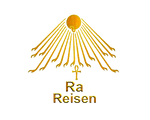Tutankhamun’s Tomb
Tutankhamun’s tomb is located in the Valley of the Kings on the west bank of the Nile and is designated KV62. On November 4, 1922, Lord Howard Carter wrote in his diary: The first step leading into the tomb was found.
Tutankhamun’s Tomb
Following this discovery, one of the greatest finds in history was revealed. It is a sealed tomb, untouched by tomb robbers. It is the tomb of the young Pharaoh Tutankhamun, who ruled from 1333 to 1323 BC. He became king at the age of nine and died around the age of nineteen. Scholars are still uncertain whether his death was caused by an injury from a chariot accident, a mosquito-borne disease, or a bone disorder, but Tutankhamun died young and was not succeeded by an heir.
Tut’s tomb is relatively small, likely because he died young. There was not enough time to build an elaborate tomb quickly before Tut was buried.
Scientists even discovered that the paint in the tomb and the colors used had decayed because the workers did not allow the paint to dry properly before sealing the tomb. What helped hide and protect the tomb from tomb robbers was the fact that it was located next to the tomb of Ramses VI, and debris from that tomb’s excavation covered the entrance to Tutankhamun’s tomb.
Carter began searching for the tomb in 1917, and in 1922 the entrance was uncovered. It was confirmed that the tomb had not been disturbed previously, and its seals were intact. After about three days, on November 24, 1922, the entrance was cleared over twelve steps leading to a corridor about 30 feet long. This corridor led to the inner chambers after a hole was made in a mud wall blocking access to the main room.
Carter wrote in his memoirs:
“At first, I could see nothing because the hot air escaping from the room made the candle flames flicker. Once my eyes adjusted, details emerged. Strange animals and statues were everywhere, and gold shimmered throughout. The burial chamber contained a large golden shrine filling almost the entire room, with three nested golden shrines inside it. Then came the stone sarcophagus holding three golden coffins inlaid with turquoise, lapis lazuli, and other semi-precious stones. The smallest coffin was made of solid gold and weighed more than 110 kilograms. Inside was the mummy of the young king. Also found in the tomb were the king’s beds, utensils, hunting tools, chairs, canes he used, and other magnificent treasures.”
The most important discovery of all was the young king’s mask made of pure gold, weighing over 10 kilograms. The mask depicts the king wearing a nemes headdress with a protective knot on his forehead and a false beard. It is inlaid with semi-precious stones, turquoise, and lapis lazuli.
For the first time in history, after the discovery in 1922, the entire contents of the tomb — more than 5,000 artifacts — will be exhibited in a special hall dedicated to the young King Tutankhamun at the Grand Egyptian Museum.
